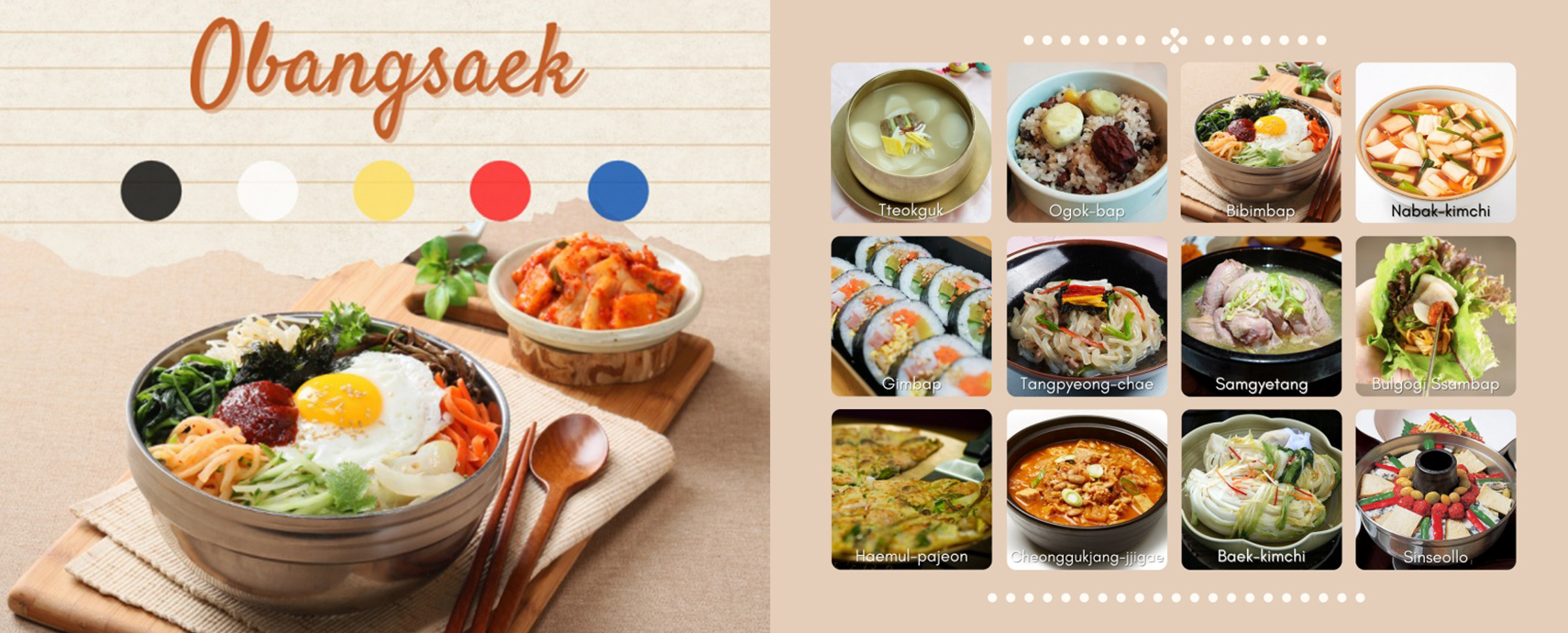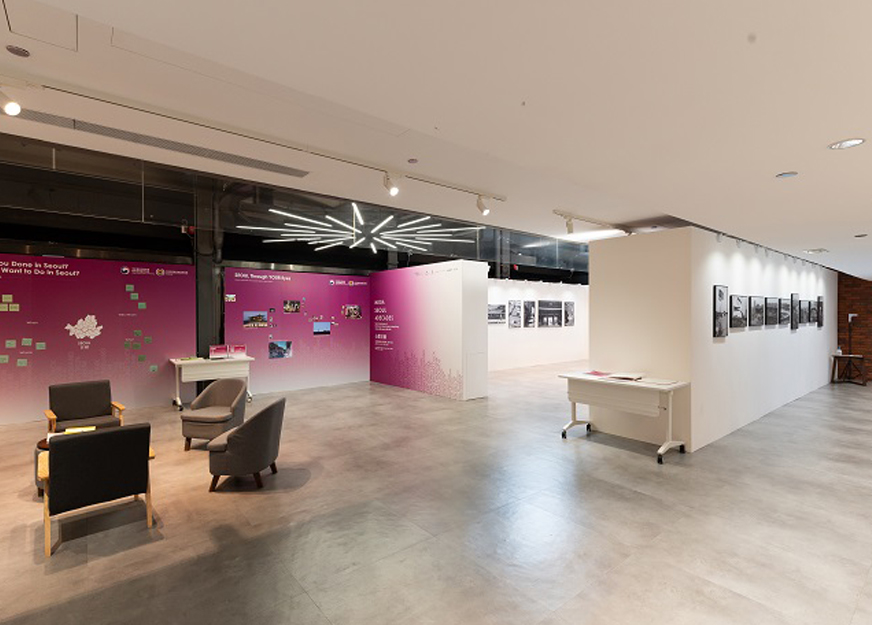March 2021

March 2021
Harmony and balance are integral to Korean culture. Thus obangsaek, the traditional Korean palette of the colors white, black, green/blue, red and yellow, constitutes much of Hansik (traditional Korean cuisine) are prepared in accordance of the beauty and harmony of obangsaek. By cooking in balance with these five colors, one is said to absorb the energy of the universe.
Written & Photo contribution by
Honorary Reporter Laura Lopez Velazquez
from Mexico

The five colors of obangsaek are each considered to have unique relationships with the elements, food and the human body.
White (baek) symbolizes metal, west and autumn, and represents purity. White foods are thought to be related to lung function; consumed in Korea are white rice, onions, garlic, potatoes and lotus root. A symbol for water, north, wisdom and winter, black foods are thought to protect the kidney and bladder and include black rice, black beans and sesame, among others. Green and blue (cheong) represent wood, youth and spring. They’re expressed with the same word: pureun. Red (jeok) means fire and south, and represents summer, energy boost and protection against evil. At the center of the five cardinal directions is yellow (hwang) for Earth. In ancient Korea, the emperor's yellow robes symbolized nobility, authority and reliability. Yellow food is said to trigger appetite (squash, sweet potatoes and soybeans).
Introducing Tal (Traditional Masks)
Jakarta, Indonesia
The KCC in Indonesia commemorated the centennial anniversary of local Korean immigration through a traditional Korean tal online exhibition from November 29 to December 31, 2020. The occasion was hosted on the KCC’s website (http://id.korean-culture.org).
As an ethnic feature of any civilization, manifest in any nation’s traditional masks are customs that prevailed in respective lands, or amongst the people. Qualities of both singularity and of universality can be gleaned from the masks upon close analyses. Korean masks (tal) are steeped in each regional dance and their own ways of attributing humor and satire to various social issues and in their everyday lives. Talchum (masked dance) performances were always occasions of festivity and laughter.

Multifaceted Perspectives
Hong Kong
To commemorate its third anniversary since establishment, the KCC in Hong Kong from January 8 to March 20, 2021 hosted a photography exhibition entitled “Mega Seoul 4Decades.” A project of the Korean Foundation for International Cultural Exchange (KOFICE) titled “Traveling Korean Arts” has selected the exhibition for funding, as a joint host alongside The Museum of Photography (Photo Museum) and PMQ.
The exhibition displays various photographers’ views of Seoul city, surpassing multiple generations including its modern and contemporary developments. Societal issues like discrepancies between traditions and innovation, construction and regeneration (of spaces and structures) are evident in the showcased works. A total of 62 photographic works by 12 photographers — at varied points in their careers, respectively — are featured.
